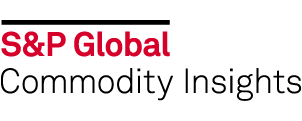
Download Report IHS CEH Report : Polyester Polyols (Chemical Economics Handbook 2019)
PDF by S&P Global Commodity Insights; IHS Markit
Information
Format: PDF Language: English Pages: 73 Publisher: S&P Global Commodity Insights; IHS Markit Publitshion date: 2019 ISBN: 126333
$49
Delivery time: Maximum 24 hours
Description
The world polyester polyol market was around 2.5 million metric tons in 2017. Nonform applications including polyurethane (PU) elastomers, PU paints and coatings, and PU adhesives and sealants made up the largest share of applications, followed by PU rigid foams. The world polyester polyol market is expected to grow at around 4% per year in 2017–23. The main environmental issue affecting polyester polyols is the Kigali Amendment to the Montreal Protocol, which restricts the use of hydrofluorocarbons (HFCs), which are widely used as a blowing agent for PU rigid forms. Consequently, hydrofluoroolefins (HFOs) are expected to replace HFCs.
In North America, the growth of the polyester polyols market was primarily driven by rising demand from the construction and automotive industries. The demand for improved energy efficiency continues to drive the market for aromatic rigid foam.
Central and South America struggled after the 2016 recession in Brazil and the ensuing political crisis. In recent years, the region has been slowly transitioning to some level of growth. The consumption of polyester polyols will grow on average 3% per year during 2017–23.
In Western Europe, polyester polyol demand grew quite dynamically (compared with 2004–14) at nearly 4% per year in 2014–17. However, regional consumption is expected to slow down to 2.7% per year for 2017–23. Nonfoam was the largest end-use, followed by PU rigid foams. In nonform applications, elastomer is the largest, followed by coatings.
For Central and Eastern Europe and the Middle East and Africa, the total market of polyester polyols is just half that of Western Europe in 2017. However, consumption growth is much higher, with a forecast of 3.4% per year for the same period. Like Western Europe, nonfoam is the largest application of polyester polyols, followed by rigid foam.
Japanese consumption of polyester bottomed out during the global recession in 2019–10, before recovering at a relatively high pace of 2.5% per year for 2010–17. This growth was driven by PU elastomers and PU rigid foams. For 2017–23, consumption of polyester polyols is expected to grow in line with the Japanese GDP at around 1.5% per year.
China is the largest polyester polyols player and consumer in the world—but only for aliphatic polyester polyols. The market for aromatic polyester polyols is still small. Most of the domestic consumption was fulfilled by local suppliers for all types of products. Polyurethane elastomer was the largest downstream market for aliphatic polyester polyols, while rigid foam consumed the majority of aromatic polyester polyols. The downstream industry structure will continue change as consumption for microcellular and artificial leather will have a lower growth rate, while thermoplastic elastomers will be the key driving force in the future.
Other Asia has been the fastest-growing market for polyester polyols at 7% per year in 2011–17. India had the highest growth rate of 12% per year while South Korea and Taiwan showed moderate growth of 3% per year in the same period. Regional consumption is expected to grow at around 4–5% per year for 2017–23. In the past, the consumption growth was driven by PU forms; nonform applications, including elastomers, coatings, and adhesives, will drive growth in 2017–23.
$49
Delivery time: Maximum 24 hours
